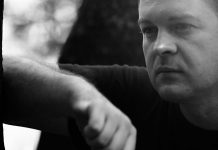Our dreams must be stronger than the unfortunate circumstances in which we find ourselves.
“Anger management courses start in a few minutes. All those enrolled should report immediately.” This was the message that resonated most often in the dirty halls of Carl Hayden High School in Phoenix, Arizona. As were the sirens of the police cars that could constantly be heard near the high school, because beatings and drugs were business as usual in the area.
Many of the school’s Hispanic students, who constituted 92 percent of the school body, were prosecuted for illegal immigration. In all this chaos, on the second floor of the high school, in a warehouse without windows, full of old furniture and discarded materials, four boys gathered daily for the robotics club. The four were brought together by Allan Cameron, a computer science teacher, and Fredi Lajvardi, a science teacher.
Before they met the four, both teachers thought it was crazy to inform their students, who were generally disinterested in anything related to school, of an underwater robotics contest organized by NASA.
However, they handed out leaflets, and the result amazed them both. The first comer was Oscar, who knew nothing about engineering. His application to join the United States Army had just been rejected because he had no legal residence permits. Yet his courage convinced the officer examining his case not to report him.
Without giving up, Oscar was looking for another way out of the miserable life he was leading with his family
Lorenzo was one of the daydreaming students in most math classes. He had been part of a gang, but had withdrawn, fearing prison. He was an ace at car repairs—as he was at stealing cars when he needed to.
The brain of the group was Cristian, one of the bullies’ favourites, due to his small stature. He was fascinated by everything science, and he spent his cold nights in a makeshift plywood room, with no electricity or heat, reading science books by the light of a lamp.
The fourth, Luis, was a naughty student, introverted and a little hard-headed, who the other three co-opted to help them handle the robot that was going to be quite difficult. With four illegal immigrants and two bewildered teachers, the team was complete.
Oscar raised the money to build the robot—just over $800. He also reached out to several teachers and engineers for technical advice. Cristian carried out the technical project, and Lorenzo’s experience in mechanics was used to actually build the robot. Luis was indispensable in the functional tests.
In just four months, Stinky was born, a cute robot made of PVC and spare parts or mechanical improvisations.
The high school team decided to participate in a competition usually reserved for universities, considering that last place in a ranking of universities would be more honourable than last in the high school competition. The competitors were students from the best technical universities in the United States: MIT, Cornell, and North Carolina, who had built robots worth tens of thousands of dollars.
The first stage of the contest, a test obstacle track inside a mock-up submarine, brought them a surprise third place. But after the students were assessed for their knowledge, and after they presented their project, the jury decided that the four deserved to win the grand prize.
Their story has travelled the world, inspired thousands of young people, and has become the subject of a feature film. However, their lives did not become easier after the competition.
Oscar was deported, eventually managing to return to the United States after a long time and enlist in the army. It took Lorenzo and Luis some time to set up a new project: a small catering company. And Cristian, a recognized genius, failed to finish college because of financial problems.
Nowadays, everyone who talks to them sees them full of optimism. The contest taught them that, like their robot, certain dreams have to go through the depths to come to the surface, victorious.
You may also like:




















